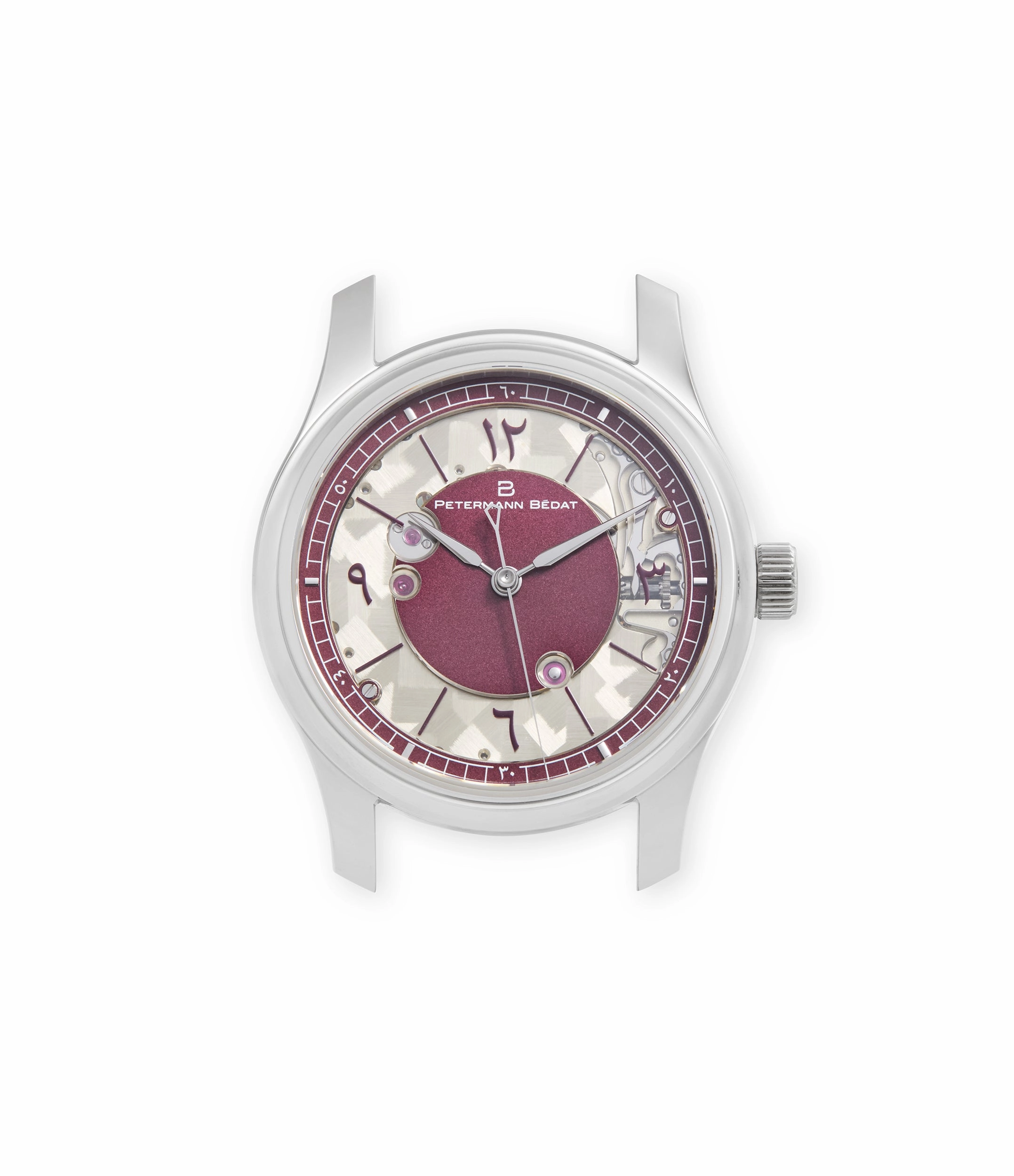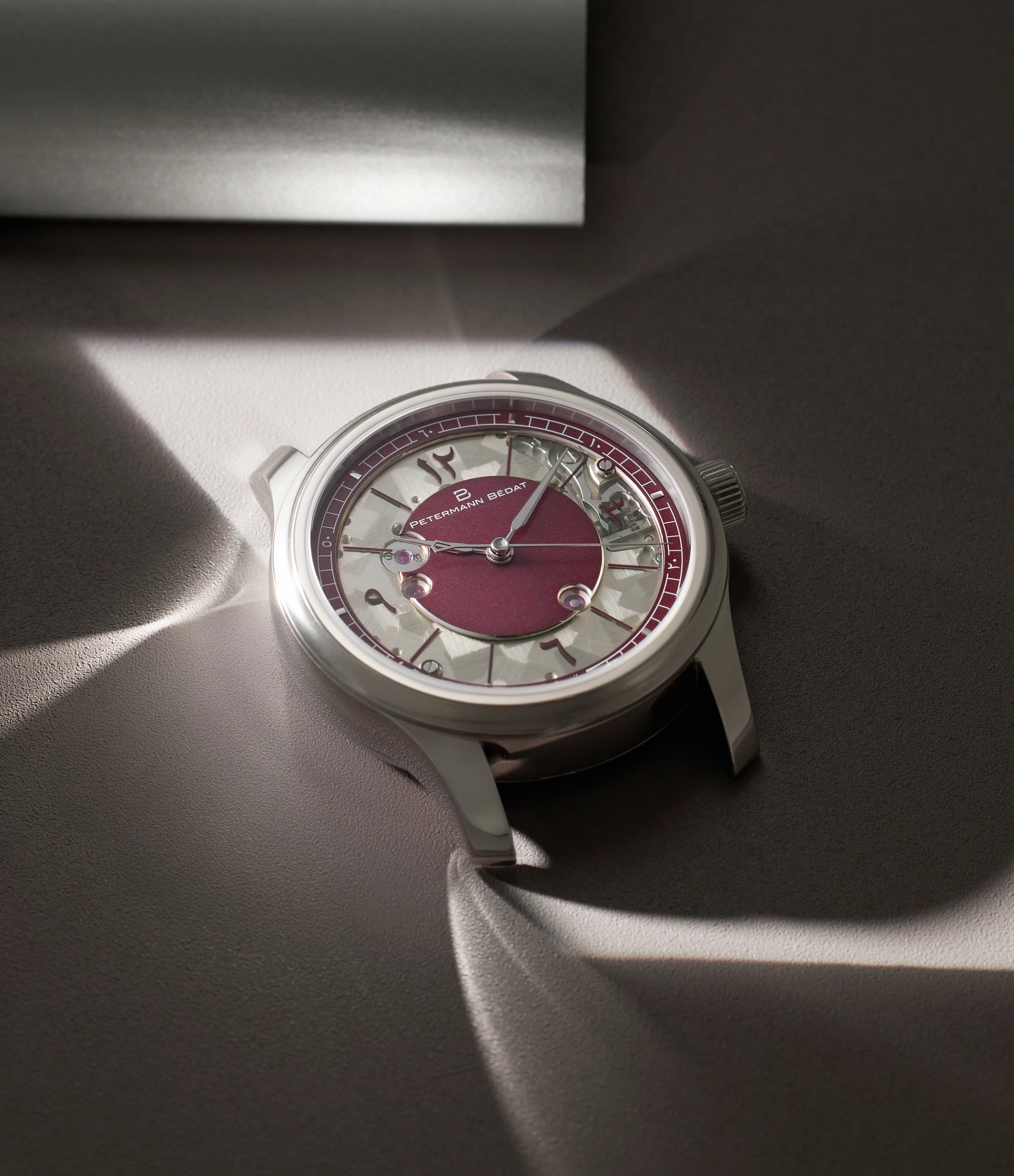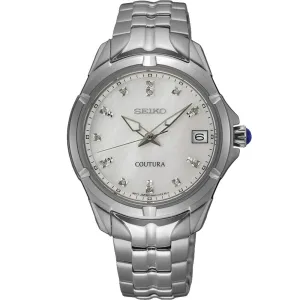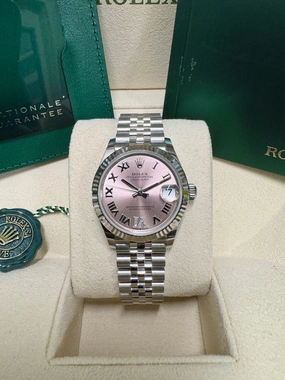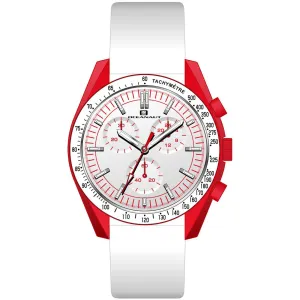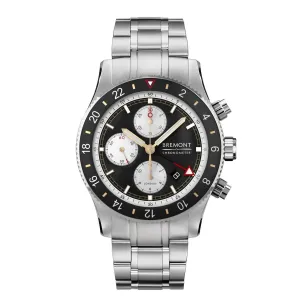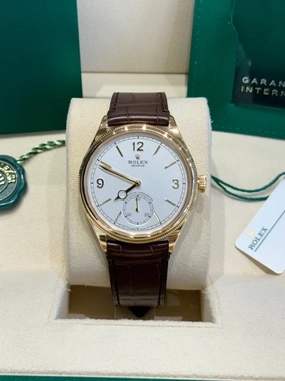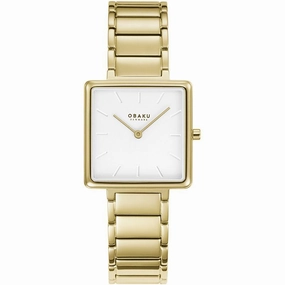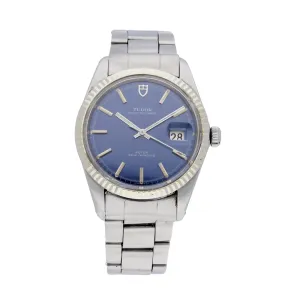This is a unique Peterman Bdat Reference 1967 with a 39mm stainless-steel case with a rich burgundy dial and eastern Arabic numerals. This is one of just three examples of the reference in stainless-steel. The dial has been embellished with gratt finishing, achieved manually. Powering it is the lavishly finished, manually wound calibre 171 with a secondary escapement to achieve the references signature seconde morte trait.
Gal Petermann and Florian Bdats history goes back to when the two aspiring watchmakers met as students at the Ecole d'Horlogerie de Genve. When Petermann went on to learn his craft at the house of A. Lange & Shne, Bdat found his way back to him, joining him at the manufacture in Glashtte after a stint with Harry Winston. Their complementary visions made them inseparable and when they felt the pull of home, they moved back to Switzerland and began on the path to independence by honing their craft in restoration.
Petermann and Bdat set up their workshop in Renens, next door to Dominique Renaud (of Renaud et Papi), with the experienced watchmaker helping the duo design their first manually wound calibre with deadbeat seconds that would become the basis for the Reference 1967. The reference was a statement of intent it was shaped by watchmakers decision to eschew a simpler path in pursuit of a higher echelon in concept as well as in design and finishing. The watch was awarded the Horological Revelation prize in 2020 by the Grand Prix dHorlogerie de Genve (GPHG).
In the seven years since they started creating under their own names, the watchmakers have produced fewer than 30 pieces. Even within this small output, this watch is exceptional. While the brand has made the 1967 in white and rose gold, creating 10 examples of each, with a second series of 25 in titanium, this is one just three produced in stainless-steel. This one has a rich, burgundy colourway, gratt embellishment and eastern Arabic numerals stands unique.
The central island of the dial, wearing a frosted finish in burgundy and with hand-bevelled edges, is surrounded by a sapphire moat whose transparency reveals the depths of the keyless works of the calibre 171 and the baseplate. This plate is adorned with an asymmetric gratt pattern. It involves engraving brush-like strokes, with the adjacent areas covered in the same pattern but in opposing directions to create a mosaic that toys with light throughout the day.
The sapphire rim is adorned with a sector-style chapter, punctuated with a quarter of eastern Arabic indices in the same shade of burgundy. A white chemin de fer track runs on the outer reaches of the dial, graduated by eastern Arabic seconds at intervals of 10. The consistency of the design vernacular, lifted by the restrained application of burgundy accents creates a harmonious effect. The dial is the work of specialist concern Comblmine.
The alpha-style hands have a rounded profile, achieved by manual finishing. The seconds hand is a simple pointer with the signature kite-shaped counterweight.
The stainless-steel case measures 39mm across and 10.7mm tall, featuring a stepped bezel, that nods to classical watch designs. However, the bezel also has a rounded aspect at the part that meets the sapphire crystal. The midcase is also subtly rotund and integrates the lugs, and their downturned trajectory, seamlessly. The crown is substantial and knurled, adding a pleasing haptic dimension to the visual feedback of seeing the gears of keyless works turning on the dial side when winding the watch.
The rim of the caseback is engraved simply with 01/01. Through the sapphire crystal is visible the finely finished, manually wound calibre 171.The movement features a deadbeat second mechanism based on an anchor system. This takes pride of place, crowning the three-quarter-style bridge.As the fourth wheel of the going train rotates, so does the ratchet wheel atop it, locking and unlocking the double-sided, arrow-tipped pallet fork. The motion is transferred through to the next spring-loaded ratchet wheel which advances the second hand in one-second increments. It pays homage to a seconde morte architecture devised by Robert Gafner, an instructor at La Chaux-de-Fonds Watchmaking School in the 1940s.
The large balance wheel bridge is topped by a black polished swan neck regulator, with the same finishing applied to the tip of the escapement bridge. The Ctes de Genve flows from one bridge to the next, the ebb of the waves seemingly uninterrupted. The bridges atop wear a frosted appearance, providing pleasing visual contrast. All the bevelled edges of the bridges are polished by hand, as are the countersinks on jewels and black polished screws.
The watch has been created expressly for a notable client.
A Collected Man is an authorised retailer for Petermann Bdat. To register your interest in this brand, please get in touch with one of our specialists.
If sold within the United Kingdom, this Petermann Bdat 1967 Deadbeat Seconds will be subject to 20% VAT
Closer look
| Brand: | Petermann Bdat |
| Model: | 1967 Deadbeat Seconds |
| Movement: | manual-winding calibre 171 |
| Functions: | hours, minutes, seconds |
| Features: | display back |
| Case material: | stainless steel |
| Case diameter: | 39mm |
| Case thickness: | 12mm |
| Lug-to-lug: | 48mm |
| Crystal: | sapphire front & back |
| Strap: | from our own collection, Petermann Bdat burgundy alligator strap, Petermann Bdat stainless steel pin buckle |
| Lug width: | 20 x 16mm |
| Year: | 2025 |
| Accompanying materials: | Petermann Bdat leather box, certificate of authenticity & warranty card |
Condition
This unique Peterman Bdat Reference 1967 is a brand new watch, such is preserved in the condition in which it was finished by the watchmakers.
Warranty
The watch comes with a lifetime guarantee of authenticity from A Collected Man as well as the remaining duration of the manufacturer warranty from Petermann Bdat.

